
At the outset of World War II in September 1939, Denmark declared itself neutral. For most of the war, the country was a protectorate and then an occupied territory of Germany. The decision to occupy Denmark was taken in Berlin on 17 December 1939. On 9 April 1940, Germany occupied Denmark in Operation Weserübung. The Danish government and king functioned as relatively normal in a de facto protectorate over the country until 29 August 1943, when Germany placed Denmark under direct military occupation, which lasted until the Allied victory on 5 May 1945. Contrary to the situation in other countries under German occupation, most Danish institutions continued to function relatively normally until 1945. Both the Danish government and king remained in the country in an uneasy relationship between a democratic and a totalitarian system until the Danish government stepped down in a protest against German demands to institute the death penalty for sabotage.

Thorvald August Marinus Stauning was the first social democratic Prime Minister of Denmark. He served as Prime Minister from 1924 to 1926 and again from 1929 until his death in 1942.
The Social Democrats, officially the Social Democratic Party or simply Social Democracy, is a social-democratic political party in Denmark. A member of the Party of European Socialists (PES), the Social Democrats have 49 of 179 members of the Folketing and three MEPs.
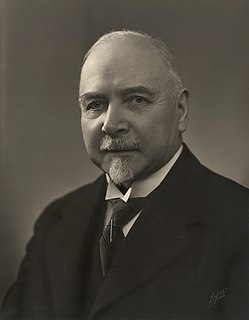
Carl Theodor Zahle, Danish lawyer and politician; prime minister of Denmark 1909–1910, 1913–1920. In 1895 he was elected member of the lower chamber of the Danish parliament (Folketinget), for the Liberal Party (Venstrereformpartiet). A campaigner for peace, in 1905 he co-founded the Social Liberal Party together with other disgruntled members of Venstrereformpartiet. He continued on as a member of the Folketinget for Det Radikale Venstre until 1928, when he became a member of the upper chamber of parliament (Landsting). In 1929 he became Justice Minister, a post which he held until 1935.
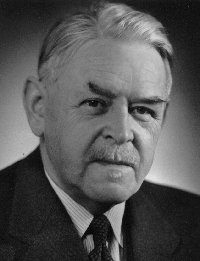
Vilhelm Buhl was Prime Minister of Denmark from 4 May 1942 to 9 November 1942 as head of the Unity Government during the German occupation of Denmark of World War II, until the Nazis ordered him removed. He was Prime Minister again from 5 May 1945 to 7 November 1945 as head of a unity government after the liberation of Denmark by the British Field Marshal Montgomery.

Hans Hedtoft Hansen was a Danish politician of the Social Democrats who served as Prime Minister of Denmark from 1947 to 1950 and again from 1953 until his death in 1955. He also served as the first President of the Nordic Council in 1953.
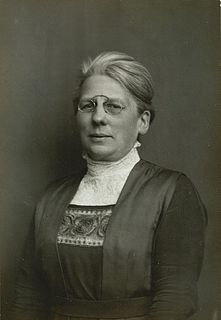
Nina Henriette Wendeline Bang née Ellinger was a Danish social democratic politician and historian. In 1924 she was appointed Minister for Education, becoming the first female minister in an internationally recognized government. She resigned as minister in 1926.

Karl Kristian Vilhelm Steincke, was a Danish politician from the Social Democratic Party. He was justice minister from 1924 to 1926 in the Stauning I Cabinet, social minister from 1929 to 1935 in the Stauning II Cabinet, and justice minister again from 1935 to 1939 in the Stauning III Cabinet and in 1950 in the Hedtoft I and II Cabinets. He has been cited as the chief architect of the Danish welfare state with the Social Reform Acts of the early 1930s, including the Kanslergade Agreement.

Folketing elections were held in Denmark on 22 October 1935, except in the Faroe Islands where they were held on 11 November. The Social Democratic Party led by Prime minister Thorvald Stauning remained the largest in the Folketing, with 68 of the 149 seats. Voter turnout was 80.7% in Denmark proper and 55.4% in the Faroes. It was in this election that the Social Democrats used the famous slogan "Stauning or Chaos".
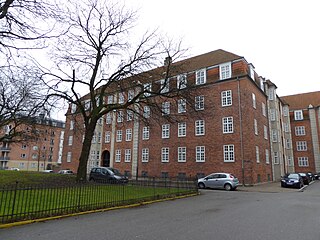
The Kanslergade Agreement was a 1933 political agreement in Denmark, which laid the foundation for the Danish welfare state. It was enacted by the government of prime minister Thorvald Stauning, with social minister K.K. Steincke being its chief architect. The Kanslergade Agreement was negotiated in Stauning's apartment on Kanslergade in Copenhagen, from which it takes its name.
Events from the year 1942 in Denmark.

Gunnar Nu Hansens Plads is a public space in the Østerbro district of Copenhagen, Denmark. It consists of a triangular plaza, located on the west side of Østerbrogade, just north of Parken Stadium, which turns into a wide street and continues for about 200 m to Fælledparken, The street then continues southwest as Per Henrik Lings Allé to Øster Allé. Several sports venues, some of which are listed, are located on the south side of the square. The former Østerfælled Barracks, now a mixed-use development known as Østerfælled Torv, are located on its north side.

The Stauning Alps are a large system of mountain ranges in Scoresby Land, King Christian X Land, northeastern Greenland. Administratively the Stauning Alps are part of the Northeast Greenland National Park zone.

The Scavenius Cabinet was the government of Denmark from 9 November 1942 to 5 May 1945. It replaced the Buhl I Cabinet, which fell due to the Telegram Crisis in November 1942, when the Germans demanded changes to the Danish government. The Germans wanted nonpolitical ministers and Nazi ministers in the new government, however only the first demand was met. Following the August Rebellion in 1943, the Germans put forward more demands, which the Danish authorities refused. The government therefore filed a resignation request for the King on 29 August 1943, who refused to accept it. The government de facto ceased to function, though still formally in power. The Board of the Heads of Department was established, where the ministries and directors of the ministries managed the country. Only after the liberation of 5 May 1945, were the resignation accepted, and the Scavenius Cabinet and Board of the Heads of Department were replaced by the Buhl II Cabinet.

The Second Cabinet of Stauning was the government of Denmark from 30 April 1929 to 4 November 1935. It replaced the Madsen-Mygdal Cabinet, and was replaced by the Third Stauning Cabinet. This was the first coalition government in Danish history, consisting of the Social Democrats and the Social Liberal Party.

The Sixth Stauning cabinet was the government of Denmark from 8 July 1940, to 4 May 1942.

The First Buhl cabinet was the government of Denmark from 4 May 1942 to 9 November 1942. It was created following the death of Prime Minister Thorvald Stauning.
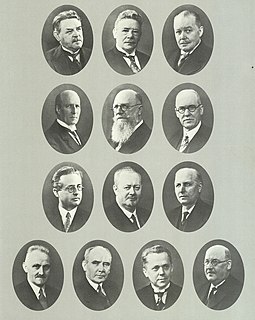
The Third Cabinet of Stauning was the government of Denmark from 4 November 1935 to 15 September 1939. It replaced the Second Stauning Cabinet, and was replaced by the Fourth Stauning Cabinet.















